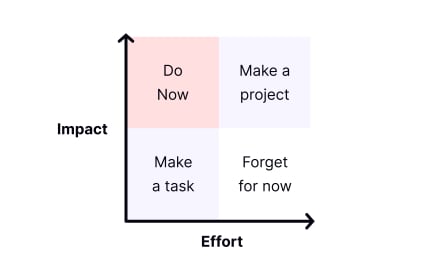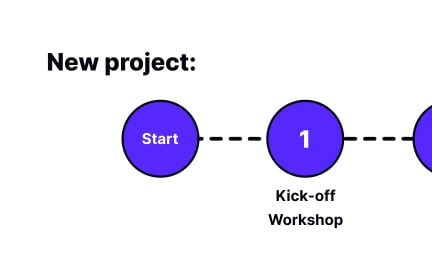Decisiveness
Decisiveness is the ability to make timely, confident choices in design and product management, balancing data, user needs, and business goals effectively.

Decisiveness is a leadership quality that directly shapes how teams operate. In design and product management, delays in decision-making can stall progress and frustrate teams. Strong decisiveness does not mean making reckless choices, but rather having the confidence and clarity to commit to a direction when needed.
For designers, decisiveness shows up when selecting among competing design directions. Instead of endlessly debating visual details, decisive designers weigh user needs, brand guidelines, and usability principles before making a call. This allows projects to move forward while leaving room for iteration later.
Product managers demonstrate decisiveness when prioritizing features. With limited time and resources, they must decide which initiatives will provide the most value to users and the business. Frameworks like RICE or MoSCoW help structure these choices, but ultimately, a decisive leader takes responsibility for selecting a path.
Indecision often stems from fear of making mistakes. Yet in fast-moving environments, hesitation can be more damaging than a wrong call. A delayed decision can slow releases, miss market opportunities, or demotivate teams who need clarity. Decisiveness helps create momentum and confidence across the group.
Effective decisiveness balances intuition with evidence. While data is vital, product development often involves incomplete information. Leaders must recognize when they have enough context to act, trusting their expertise and judgment to fill gaps. Over time, this creates a culture of learning, where decisions are tested and refined rather than endlessly debated.
By cultivating decisiveness, teams can move forward with purpose. It fosters accountability, speeds delivery, and helps organizations adapt quickly in competitive markets.
Learn more about this in the Navigating Trade-offs and Priorities Lesson, a part of the Cross-Functional Design & Product Teams Course.
Key Takeaways
- Decisiveness means timely, confident decision-making.
- In design, it helps resolve debates and move forward.
- In product management, it guides feature prioritization.
- Hesitation can harm progress more than mistakes.
- Strong leaders balance data with intuition.
- Decisiveness builds momentum and team confidence.
Teams rely on clarity to stay aligned and productive. Without decisions, confusion and wasted effort take hold. A decisive leader ensures that everyone knows the priorities and can focus on execution.
This confidence strengthens morale because people trust their work is moving in a meaningful direction. Even if adjustments are needed later, progress is better than stagnation.
Decisiveness can be developed through practice and reflection. By setting deadlines for choices, using structured frameworks, and learning from past results, professionals improve their ability to make timely calls.
Confidence builds when decisions are reviewed and lessons extracted. Over time, the habit of acting decisively becomes part of a leader’s style, reducing fear of missteps.
Decisiveness does not mean ignoring evidence. It requires setting boundaries on how much information is necessary before acting. Leaders should gather enough context, define success criteria, and make the decision within set timelines.
This structured approach minimizes risk while keeping projects on schedule. It balances bold action with responsibility, ensuring decisions drive progress without unnecessary exposure.
Recommended resources
Courses

Mentorship Mastery

Design Thinking

Workshop Facilitation
Lessons

Best Questions to Ask a Mentor

Design Workshop Basics








